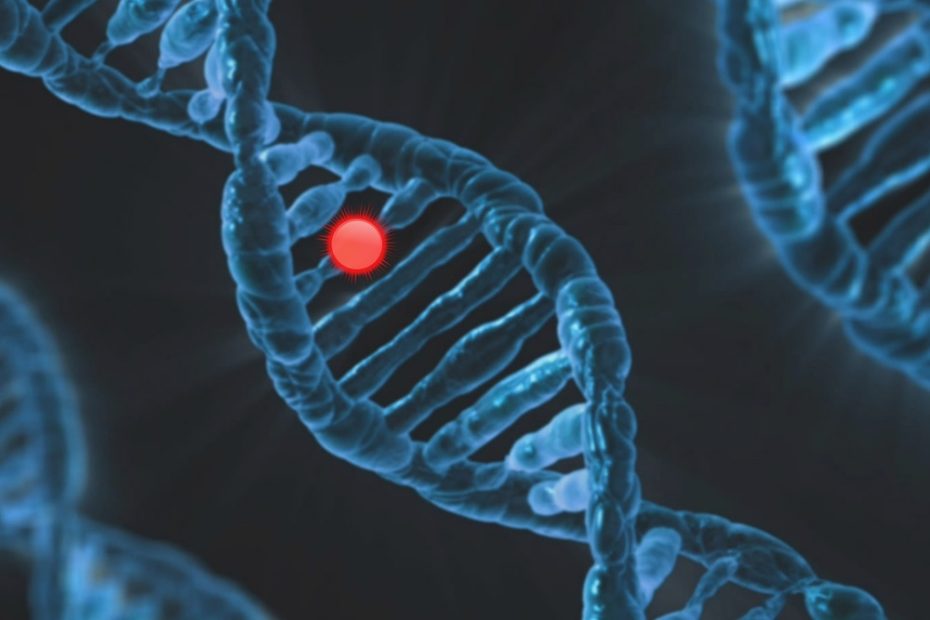Put two people in a lab, give them the same exercise routine and identical diets. One person gains weight, the other person does not.
Nowadays, this result doesn’t really raise eyebrows – it seems to be a given that some people are simply lucky enough to have a higher metabolism than others. But how exactly does this work?
Unsurprisingly, this is all down to our genetic makeup. More specifically, it’s to do with gene-environment interactions – which is when variations of a gene interact with the same environment in different ways.
The Human Genome Project estimates that we have around 20,000 to 25,000 genes, coiled up in DNA and squeezed inside the nucleus of each cell (1). It would make sense that at least a few of these would be directly linked with our metabolism. Take a look at a few of the more interesting ones below:
FTO – The “Fatso” gene
The FTO gene was discovered in 1999 and promptly dubbed ‘fatso’ (FTO) due to its large size.
Hats off to the group for the apt naming – variants of the FTO gene predispose people towards having a higher BMI, coding for something known as the “Fat Mass and Obesity Associated” protein.
To put this into numbers – people who carry a specific variant of this gene weigh (on average) 1.2 kgs more than someone without a copy. This increases to an extra 3kg if the person has two copies of the gene variant (2)!
This is because FTO works as a nutrient sensor. In broader terms, this gene helps to regulate how hungry you might feel; those who have a higher BMI due to this gene need more food to reach the same level of fullness.
PPARG and Fat Storage
PPARG affects weight gain but in a different manner to FTO. This gene is associated with fat metabolism – when the gene is switched on, PPARG aids in the uptake of dietary lipids from your blood stream, moving the fats into fat cells.
Knockout mice bred without a PPARG gene have no fatty adipose tissue – emphasising the importance of this gene in fat metabolism (3).
On the other end of the spectrum, too much activation of this protein can result in weight gain; overweight people tend to have this protein in much higher amounts compared to those who are skinnier.
This, of course, can then be linked to an increased risk of developing Type 2 diabetes and having cardiovascular difficulties.
ADRB2 and Fat Breakdown
Another interesting link between your genes and metabolism is the ADRB2 gene, which codes for a receptor found on the surface of cells.
ADRB2 is involved in the process opposite to that of PPARG – fat breakdown as opposed to fat storage. The hormone epinephrine can bind to this receptor, acting as a signal to increase the metabolism of lipids.
Specific copies of the ADRB2 gene have also been associated with obesity and insulin resistance – overweight individuals with this variation are more likely to have higher blood lipid levels than those without (4).
Environment over Genes
Thankfully, real life does not take place in a controlled lab setting. Genes do affect the way you metabolise food, but so do many other factors. Consider the environment around you – not just in the literal sense (whether you are inside or outside), but what your body goes through each day: what foods you eat, how stressed you are, how much sleep you get.
This has a much bigger impact on your metabolism and to a further extent, your weight, than your genes do. Think about it this way – someone might have the obesity-linked FTO variant, but if they have a healthy diet and exercise regularly, there’s no question that they’ll be at a healthier weight than someone who doesn’t.
Need convincing? Take a look at this case study – Amish people have higher incidences of the obesity-linked FTO variant in their population, and yet the stats for being obese in this community is very low (5). Why? Amish people often do a lot of physical labour on farms – so, exercise beats a genetic predisposition for being overweight pretty much any day.
Boost your metabolism with RYH
Encouragingly, being at a healthy weight is mostly about the choices you make. As well as exercise, there are certain foods you can eat that contribute towards having a good metabolism.
A great starting point for this is to eat foods that aid in digestion and promote good bacteria in the gut (6). Examples include:
- Fermented foods, like kefir and kimchi
- Fibre rich foods, like beans and sweet potato
- Protein rich foods, like nuts and chicken
All of which are part of the Reset Your Health programme, which provides a personalised meal plan that works to optimise and boost your metabolism.
Take a look! You’re not able to decide which genes you have, but you can certainly take this step towards having a healthier lifestyle.
References
1 – The Human Genome Project [Internet]. National Human Genome Institute [cited 2020Jun26]. Available from: https://www.genome.gov/human-genome-project
2 – Sandholt CH, Hansen T, Pedersen O. Beyond the fourth wave of genome-wide obesity association studies. Nutr Diabetes. 2012
3 – Ahmadian M, Suh JM, Hah N, Liddle C, Atkins AR, Downes M, Evans RM. PPARγ signaling and metabolism: the good, the bad and the future. Nat Med. 2013
4 – Saliba LF, Reis RS, Brownson RC, Hino AA, Tureck LV, Valko C, de Souza RL, Furtado-Alle L. Obesity-related gene ADRB2, ADRB3 and GHRL polymorphisms and the response to a weight loss diet intervention in adult women. Genet Mol Biol. 2014
5 – High Levels Of Physical Activity Can Blunt Effect Of Obesity-related Gene, Study Suggests [Internet]. ScienceDaily [cited 2020Jun26]. Available from: https://www.sciencedaily.com/releases/2008/09/080908185228.htm
6 – Rogers C. Gut Well Soon, Panoma Press. 2019
